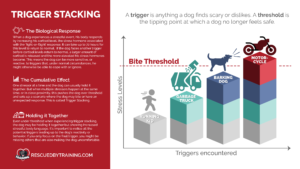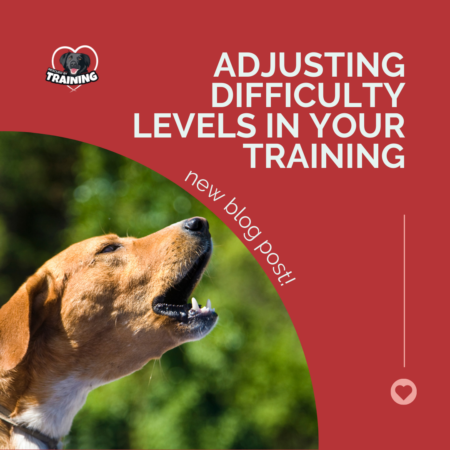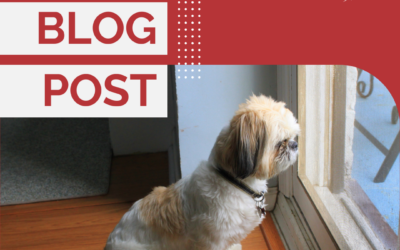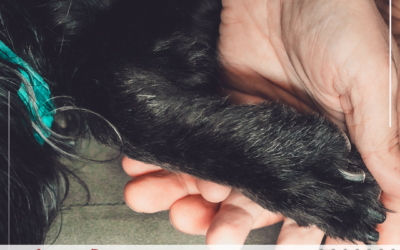One of the biggest differences working with a qualified trainer and trying to DIY your training is knowing when or how to make your training more challenging for your dog. One of the recent survey questions submitted was “how do I know when my dog is ready to move to the next step?” So this is another installment in my reader request series, RBT Reader Requests. “This is especially hard in fear, aggression, reactivity and separation anxiety cases, which are my specialty. Basic obedience is a little easier because we follow a standardized, incremental plan with measurable ways to know whether the dog is learning, not just guessing or getting lucky and when to push to make it a little more challenging. (Well, if you’re training properly and under the guidance of a trainer you should be doing this!)
 Since my behavior practice involves working fear and aggression cases, I spend a lot of time helping clients navigate how we can break the things their dog is afraid of (triggers) into something the dog isn’t afraid of. I’m constantly juggling all the little pieces of the dog’s fear puzzle to ensure we’re not trigger stacking the dog and that we’re working below the dog’s threshold. (You can download my free trigger stacking handout here.) I’m working to ensure the trigger is far enough away or quiet enough or not moving, so the dog can feel safe, and then we build on that foundation and make it gradually more difficult over time.
Since my behavior practice involves working fear and aggression cases, I spend a lot of time helping clients navigate how we can break the things their dog is afraid of (triggers) into something the dog isn’t afraid of. I’m constantly juggling all the little pieces of the dog’s fear puzzle to ensure we’re not trigger stacking the dog and that we’re working below the dog’s threshold. (You can download my free trigger stacking handout here.) I’m working to ensure the trigger is far enough away or quiet enough or not moving, so the dog can feel safe, and then we build on that foundation and make it gradually more difficult over time.
Naturally, humans want things to move as quickly as possible and in the process they often minimize, or may not even notice, the differences in a trigger that dogs definitely pay attention to. It may not register to a human that a person or dog 50 feet away is less scary than one that is 5 feet away. Or, a person walking with a limp, cane or wearing a big hat might be scarier for that dog. Or, a person running toward the dog is much scarier than a person who is not moving. Or, a baby crying in the same room is scarier than a quiet baby. Or, fireworks far away are scarier than fireworks in your backyard. And so on and so on. We must understand these nuances or we are setting our dog up to fail.
These factors that I manipulate to make the trigger harder or easier are called parameters and most commonly the parameters I work with for fear, aggression and reactivity cases are:
- Distance – how far or close the scary thing is
- Duration – how long the scary thing is present
- Intensity – how quiet or active the scary thing is
Other important things to keep in mind when adjusting the difficulty level in your dog’s training:
- Only change one parameter at a time
- Data track the impact of the change
- Work incrementally
- Monitor your dog’s body language
- Take a break if the dog is struggling
We have to break training difficulty into incremental, manageable, bite-sized pieces the dog can handle or the dog will not be successful. If we make it too hard, the dog will not succeed, and the human will be frustrated. We can’t expect to go from a dog being comfortable with a stranger at 50 feet away standing still to human running and screaming within 5 feet of the dog. If we make it too easy, then training is going to take too long and not be efficient and the human will be frustrated. See a common theme here? Human frustration.
People commonly give up on training their dog because they don’t see results, often because they’re not following a written plan. This is one of the key points I covered in my post, Why Training Is So Expensive…Or Is It? Professional, efficient, effective training will save you money in the long run and make your training experience more enjoyable and more successful. Knowing how to keep your dog safe while efficiently making training progress will reduce your frustration, save you time and money and you will stay motivated to keep training. This is my number one reason for why people should work with a professional.
For separation anxiety there are many more parameters, so that will be a post for another time. I do cover all the things we should be considering in my self-paced Separation Anxiety Foundations Course including how we manipulate and data track for things like duration, pre-departure cues, who is doing the departure and more. You can sign up for my course here.
While fear is the most difficult thing to improve in a dog, we can work to come up with a plan to help your dog feel safer, so if you and your dog need help, schedule a consult today.
Happy training!
![]()




